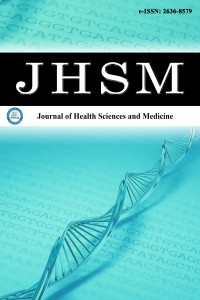1.
Kovesdy CP. Epidemiology of chronic kidney disease: an update 2022. Kidney Int Suppl. 2022;12(1):7-11.
2.
Zhang F, Wang H, Huang L, Bai Y, Wang W, Zhang H. Effect of exercise interventions for sleep quality in patients with chronic kidney disease: a systematic review and meta-analysis. Int Urol Nephrol. 2023;55(5):1193-1204.
3.
Bikbov B, Purcell CA, Levey AS, et al. Global, regional, and national burden of chronic kidney disease, 1990-2017: a systematic analysis for the Global Burden of Disease Study 2017. Lancet. 2020;395(10225):709-733.
4.
Beckwith H, Thind A, Brown EA. Perceived life expectancy among dialysis recipients: a scoping review. Kidney Med. 2023;5(8):100687.
5.
Molsted S, Bennett PN, Wilund K, et al. Nurses' and medical doctors' attitudes towards exercise for people with chronic kidney disease in Denmark. J Ren Care. 2023;49(3):206-216. doi: 10.1111/jorc.12445
6.
Salehi F, Dehghan M, Mangolian Shahrbabaki P, Ebadzadeh MR. Effectiveness of exercise on fatigue in hemodialysis patients: a randomized controlled trial. BMC Sports Sci Med Rehabil. 2020;12(1):19.
7.
Böhm J, Monteiro MB, Thomé FS. Effects of aerobic exercise during haemodialysis in patients with chronic renal disease: a literature review. J Bras Nefrol. 2012;34(2):189-194.
8.
Jayaseelan G, Bennett PN, Bradshaw W, Wang W, Rawson H. Exercise benefits and barriers: the perceptions of people receiving hemodialysis. Nephrol Nurs J. 2018;45(2):185-219.
9.
Hargrove N, El Tobgy N, Zhou O, et al. Effect of aerobic exercise on dialysis-related symptoms in individuals undergoing maintenance hemodialysis: a systematic review and meta-analysis of clinical trials. Clin J Am Soc Nephrol. 2021;16(4):560-574.
10.
Doğru BV, Kasar KS. Hemodiyaliz hastalarının fiziksel aktivite düzeyleri, algılanan egzersiz yararları, engelleri ve ilişkili faktörler. HUHEMFAD. 2022;9(1):10-16.
11.
Zelle DM, Klaassen G, Van Adrichem E, Bakker SJ, Corpeleijn E, Navis G. Physical inactivity: a risk factor and target for intervention in renal care. Nat Rev Nephrol. 2017;13(3):152-168.
12.
Fisk JD, Ritvo PG, Ross L, Haase DA, Marrie TJ, Schlech WF. Measuring the functional impact of fatigue: initial validation of the fatigue impact scale. Clin Infect Dis. 1994;18(Supplement_1):S79-S83.
13.
Öztürk M. Üniversitede eğitim-öğretim gören öğrencilerde uluslararası fiziksel aktivite anketinin geçerliliği ve güvenirliği ve fiziksel aktivite düzeylerinin belirlenmesi. Yayımlanmamış Yüksek Lisans Tezi, Ankara: Hacettepe Üniversitesi. 2005.
14.
Taş D, Akyol A. Diyaliz hastalarında Egzersiz Yararları/Engelleri Ölçeği” nin Türkçeye uyarlanması: geçerlik ve güvenirlik çalışması. Nefrol Hemş Derg. 2019;14(1):17-25.
15.
Kılıç Z, Uzdil N. Dialysis symptoms on exercise perception of hemodialysis patients. Turk J Nephrol. 2023;32(1):39-47.
16.
Darawad MW, Khalil AA. Jordanian dialysis patients' perceived exercise benefits and barriers: a correlation study. Rehabil Nurs J. 2013;38(6):315-322.
17.
Jayaseelan G, Bennett PN, Bradshaw W, Wang W, Rawson H. Exercise benefits and barriers: the perceptions of people receiving hemodialysis. Nephrol Nurs J. 2018;45(2):185-219.
18.
Lightfoot CJ, Wilkinson TJ, Song Y, Burton JO, Smith AC. Perceptions of exercise benefits and barriers: the influence on physical activity behaviour in individuals undergoing haemodialysis and peritoneal dialysis. J Nephrol. 2021;34(6):1961-1971.
19.
Wang CJ, Johansen KL. Are dialysis patients too frail to exercise? Semin Dialysis. 2019;32(4):291-296.
20.
Kirkman DL, Bohmke N, Carbone S, et al. Exercise intolerance in kidney diseases: physiological contributors and therapeutic strategies. Am J Physiol-Renal Physiol. 2021;320(2):F161-F173.
21.
Musolino M, Presta P, Cianfrone P, et al. Self-reported physical inactivity and mood disturbances in end-stage kidney disease (ESKD) Patients on chronic dialysis treatment. J Clin Med. 2023;12(22):7160.
22.
Avesani CM, Trolonge S, Deléaval P, et al. Physical activity and energy expenditure in haemodialysis patients: an international survey. Nephrol Dialysis Transplant. 2012;27(6):2430-2434.
23.
Matsuzawa R, Matsunaga A, Wang G, et al. Habitual physical activity measured by accelerometer and survival in maintenance hemodialysis patients. Clin J Am Soc Nephrol. 2012;7(12):2010-2016.
24.
Bruinius JW, Hannan M, Chen J, et al. Self-reported physical activity and cardiovascular events in adults with CKD: findings from the CRIC (chronic renal insufficiency cohort) study. Am J Kidney Dis. 2022;80(6):751-761.
25.
Huang M, Lv A, Yang F, et al. Impacts of cognition of exercise on physical activity participation in hemodialysis patients. Semin Dialysis. 2023;36(5):366-373.
26.
Regolisti G, Maggiore U, Sabatino A, et al. Interaction of healthcare staff ’s attitude with barriers to physical activity in hemodialysis patients: a quantitative assessment. PLoS One. 2018;13(4):e0196313.
27.
Faigenbaum AD, Rebullido TR. Understanding physical literacy in youth. Strength Conditioning J. 2018;40(6):90-94.
28.
Hannan M, Bronas UG. Barriers to exercise for patients with renal disease: an integrative review. J Nephrol. 2017;30(6):729-741.
29.
Moorman D, Suri R, Hiremath S, et al. Benefits and barriers to and desired outcomes with exercise in patients with ESKD. Clin J Am Soc Nephrol. 2019;14(2):268-276.
30.
Zeng J, Bennett PN, Hill K, Borlace M, Xu Q. The exercise perceptions of people treated with peritoneal dialysis. J Renal Care. 2020;46(2):106-114.

